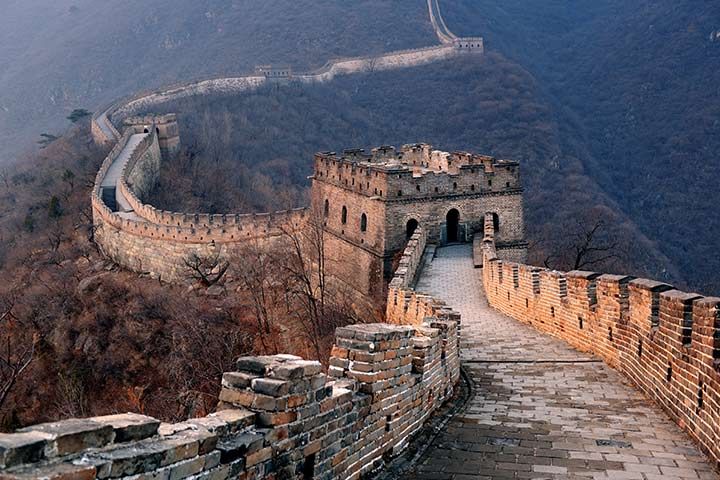The Majestic Great Wall of China: A Timeless Marvel
The Great Wall of China stands as a monumental testament to human ingenuity and perseverance. Spanning thousands of miles, this ancient fortification has captured the imagination of people worldwide. In this blog post, we will explore the history, founders, architects, and unique aspects of the Great Wall of China.
History of the Great Wall of China
The Great Wall’s history dates back over 2,000 years, with construction beginning during the 7th century BC. The wall was built to protect Chinese states and empires from various nomadic groups from the north. Over centuries, different dynasties contributed to its construction, making it the longest wall in the world. Its primary purpose was to serve as a defense mechanism, but it also played significant roles in border control and trade regulation.
The Founders and Architects
The initial construction of the Great Wall was ordered by Emperor Qin Shi Huang, the first emperor of China, in the 3rd century BC. However, the wall as we know it today was primarily built during the Ming Dynasty (1368-1644 AD). The Ming emperors were responsible for reinforcing and expanding the wall, using more advanced construction techniques and materials like bricks and stone.
The architects and laborers of the Great Wall were diverse, including soldiers, peasants, and prisoners. The coordination and efforts of these workers, under the direction of skilled architects, resulted in the creation of this awe-inspiring structure.
Unique Features and Architecture
One of the most remarkable features of the Great Wall is its architectural diversity. The wall stretches over 13,000 miles, encompassing various terrains like mountains, deserts, and plains. The construction techniques adapted to these different landscapes are a testament to the ingenuity of ancient Chinese engineers.
- Watchtowers and Fortresses: These were strategically placed along the wall, serving as lookout points and defense mechanisms against invaders.
- Beacon Towers: Used for communication, these towers enabled the rapid relay of messages through smoke signals by day and fire by night.
- Materials and Techniques: The Great Wall was built using locally sourced materials, such as earth, wood, bricks, and stones. The construction methods varied depending on the region and available resources.
 Early Building Phases
Early Building Phases
The early building phases of the Great Wall were characterized by the use of readily available materials and rudimentary construction techniques. During the 7th century BC, various states built walls using compacted earth, wood, and stones. These early walls were not connected but served to protect individual states from invasions.
- State of Chu (7th century BC): One of the earliest walls was built by the State of Chu, consisting mainly of earth and wooden structures. This wall was designed to defend against invasions from neighboring states.
- Warring States Period (475-221 BC): During this period, several states, including Qi, Yan, and Zhao, constructed walls to protect their territories. These walls were primarily made of tamped earth, a technique that involved compacting soil to create solid and durable walls.
As these states were unified under the Qin Dynasty, Emperor Qin Shi Huang ordered the connection and expansion of these walls, leading to the formation of the initial Great Wall.
Wall Building During the Ming Dynasty
The Ming Dynasty marked a significant era in the construction and fortification of the Great Wall of China. The Ming emperors, facing constant threats from Mongol and other nomadic tribes, undertook extensive efforts to reinforce and expand the wall. This period saw the transformation of the wall from earthen and wooden structures to a more formidable stone and brick fortification.
- Construction Techniques: The Ming builders utilized bricks, stones, and lime mortar to construct a stronger and more durable wall. They developed sophisticated building techniques, including the use of interlocking bricks and the creation of sloped walls to enhance defense capabilities.
- Strategic Design: The Ming wall was designed with a series of watchtowers, beacon towers, and fortresses. These structures were strategically placed to provide better surveillance, communication, and defense. The wall also featured parapets and battlements, allowing soldiers to fire arrows and defend against invaders effectively.
- Labor and Workforce: The construction during the Ming Dynasty involved a massive workforce, including soldiers, peasants, and prisoners. The laborers worked tirelessly, often in harsh conditions, to build and maintain the wall. The sheer scale of the project required meticulous planning and coordination.
- Legacy and Impact: The Ming Dynasty’s efforts resulted in the most well-preserved and recognizable sections of the Great Wall today. These sections stretch across rugged terrains, mountains, and deserts, showcasing the architectural brilliance and resilience of the era. The Ming Wall not only served as a formidable defense but also facilitated trade and communication along the Silk Road.
FAQs about the Great Wall of China
Q1: How long is the Great Wall of China?
A: The Great Wall of China is approximately 13,170 miles (21,196 kilometers) long.
Q2: Can the Great Wall be seen from space?
A: Contrary to popular belief, the Great Wall of China is not visible from space with the naked eye. It can only be seen with the aid of special equipment.
Q3: What is the significance of the Great Wall today?
A: Today, the Great Wall of China is a UNESCO World Heritage Site and a symbol of Chinese culture and history. It attracts millions of tourists each year, offering a glimpse into the country’s rich past.
Q4: How was the Great Wall defended?
A: The Great Wall was defended by soldiers stationed in watchtowers and fortresses. These soldiers used various weapons, including bows, arrows, and spears, to repel invaders.
Conclusion
The Great Wall of China is more than just a wall; it is a symbol of China’s strength, resilience, and rich history. Its construction showcases the remarkable capabilities of human hand-writing across different dynasties and terrains. Visiting the Great Wall offers a unique opportunity to step back in time and marvel at one of humanity’s greatest architectural achievements. Whether you are interested in history, architecture, or simply seeking an adventure, the Great Wall of China is a must-see destination.



